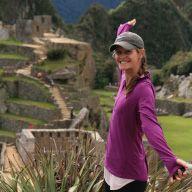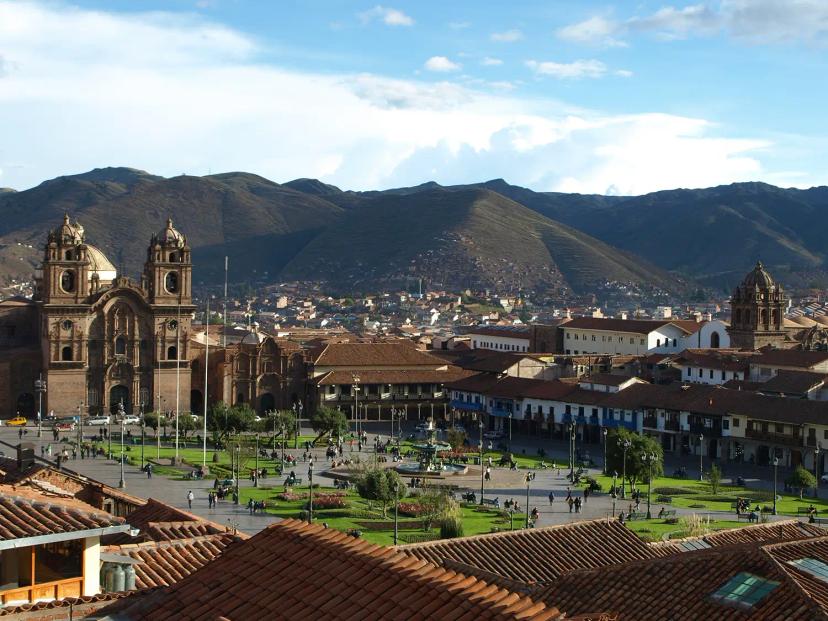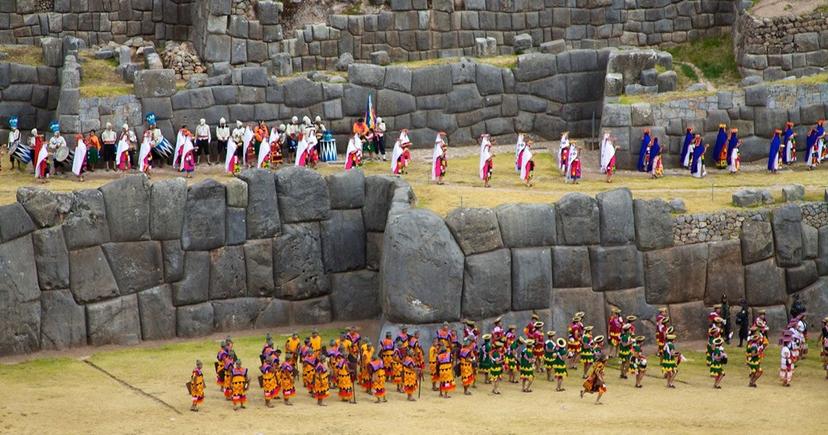*This article was updated by Gina Cronin July 2019
Modern day Cusco orchestrates a symphony of landscape, history and culture that meet in the heart of Plaza de Armas. As well as being set in a beautiful landscape where civilization collides with the Andes Mountains, the rich past of the Plaza is narrated by Inca history, Spanish architecture and native Quechua culture that unite with the present.

Locals, expats and travelers gravitate to Plaza de Armas, a place where nature meets urban life, as they traverse the narrow streets of Cusco. From a seated position in the Plaza, travelers absorb the picturesque setting. Plaza de Armas is nestled between the Andes that are sprinkled with adobe buildings. Cobblestone streets flow down the hills in maze-like patterns and meet in the Plaza, thus serving as a gateway between nature and city life. While the hustle and bustle of Cusco remains, the surrounding mountains transition from a deep shade of green to an eclectic blend of yellow, light green and brown with the changing of seasons. Manicured grass and flowers in the Plaza border the central fountain, starring the Inca King Pachacutec, as tourists and locals go about their daily business. With nature at your fingertips, the opportunity to explore new hiking trails before returning to the city for a well earned meal at one of the many restaurants in the Plaza is a great way to spend a day.
Cusco Tours:
Two ornate churches on adjacent sides of Cusco’s Plaza de Armas demand attention and mark the meeting place of the Inca and Spanish historic roots built within the buildings. The Inca were fine stonecutters and the remains of their work bear witness to their skill. Each stone was cut and then strategically pieced together using a technique called ashlar through which bricks are placed so close together that mortar is not used. The Spanish later dismantled the Inca structures and used the bricks to construct new buildings; including portions of Cathedral of Santo Domingo, more commonly referred to as the Cusco Cathedral, and its neighboring Church of the Society of Jesus that now stand proudly in Plaza de Armas. Today visitors regularly look up in awe at these churches before entering on a guided tour, but are uninformed about the Inca influence built within these Spanish structures.
A guide will likely point out a unique rendition of The Last Supper painting during a tour of the Cusco Cathedral in the Plaza. At first glance the biblical scene may appear standard, but upon closer observation, the roasted animal on the dish placed in the center of the table looks a bit peculiar. Cuy (Spanish for guinea pig) meets Jesus in Marcos Zapata’s Andean interpretation of this religious art piece that finds its home at Plaza de Armas. As a Quechua artist, Mr. Zapata studied at the Cuzco School, a Spanish established art school that taught locals the disciplines of European-inspired artwork during the late 1700s. Although students were only permitted to paint European and Catholic inspired scenes, Marcos Zapata incorporated his own cultural flavor by depicting roasted cuy before Jesus. Cuy is still prepared as a delicacy in Cusco and travelers with an audacious palate are welcome to try a serving.

Marcos Zapata’s rendition of The Last Supper. Photograph from SmugMug, Inc
The history of Cusco’s Plaza de Armas is woven together with the common thread of being a place of cultural meeting. Throughout the years the Plaza has been the staging ground for the Spanish conquest as well as the execution of Tupac Amaru II who led the indigenous uprising against the Spanish in the late 1700s. Fast forward to the twenty-first century and Plaza de Armas is a historical melting pot where tourists from around the globe intermingle with locals on a daily basis. Cultural mingling is also demonstrated by the variety of cuisines offered at the surrounding restaurants in the Plaza, ranging from local Peruvian favorites to fast food options, which will please anyone’s taste buds.
The stark, yet seamless marriage of traditional and modern culture is very prevalent in the Plaza. Locals that live on farms overlooking the Plaza often walk into Cusco wearing traditional Quechua clothing, which is a mixed style from the pre-Spanish days and Spanish Colonial peasant dress. This dress is easily distinguished by brightly colored hand woven wool and mixed patterns. In exchange for a couple Peruvian soles, you can take a picture with a smiling woman wearing Quechua clothing in company of her llama. The presence of Quechua culture in the Plaza meets modernism as tourists come with their cameras and other locals wearing western style clothes tend to their daily routines.
Among Cusco’s many charms, its Plaza de Armas is a destination where layered history and cultural fusion meet modern society. A trip to the Plaza is a must on a visit to Cusco and often leaves a lasting impression on those fortunate to experience its magic.
Contact our team of experts to begin planning your own tour of Machu Picchu and Cusco.



Sign up to receive our newsletter for great articles, stunning photos, and special deals.